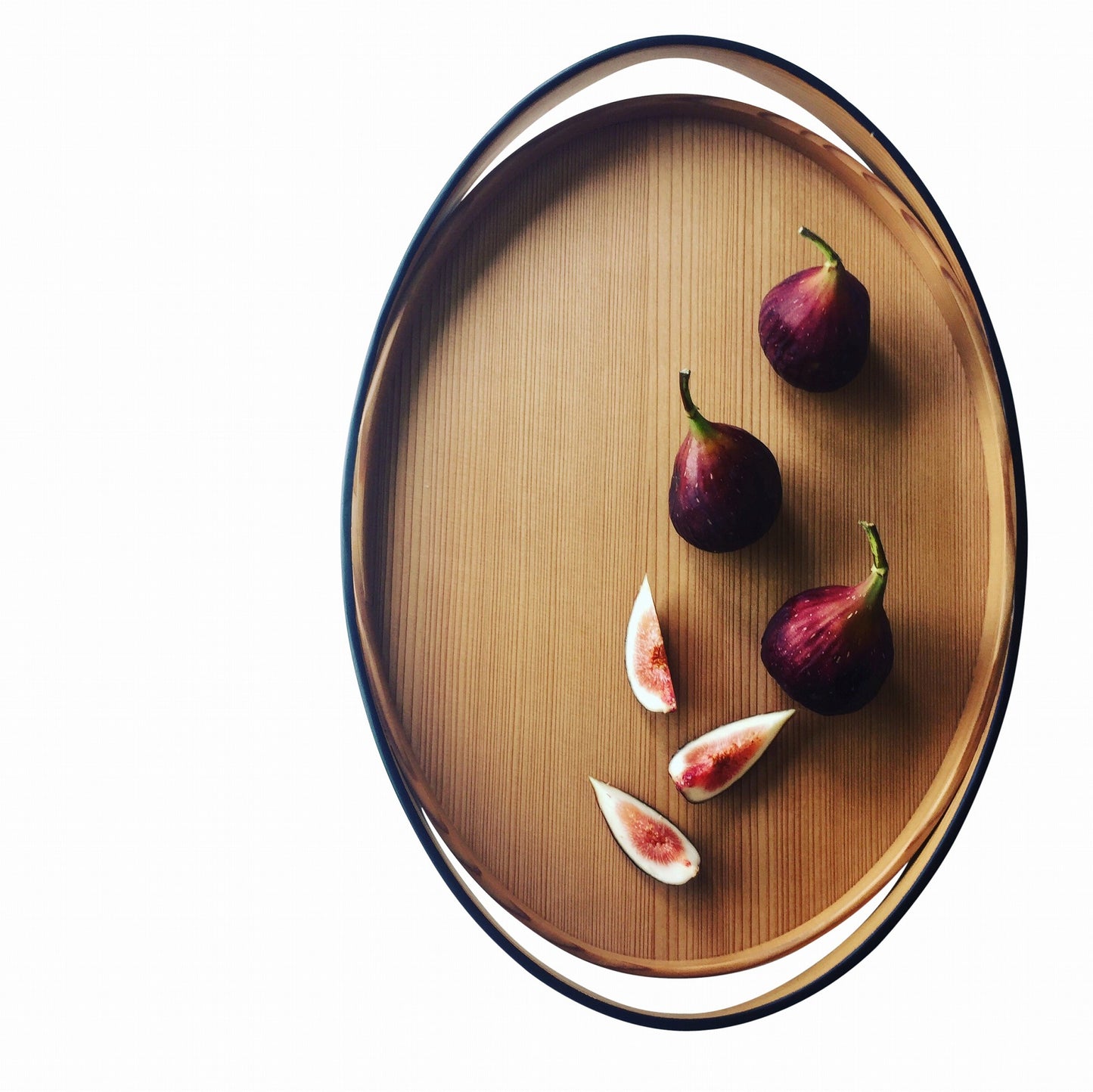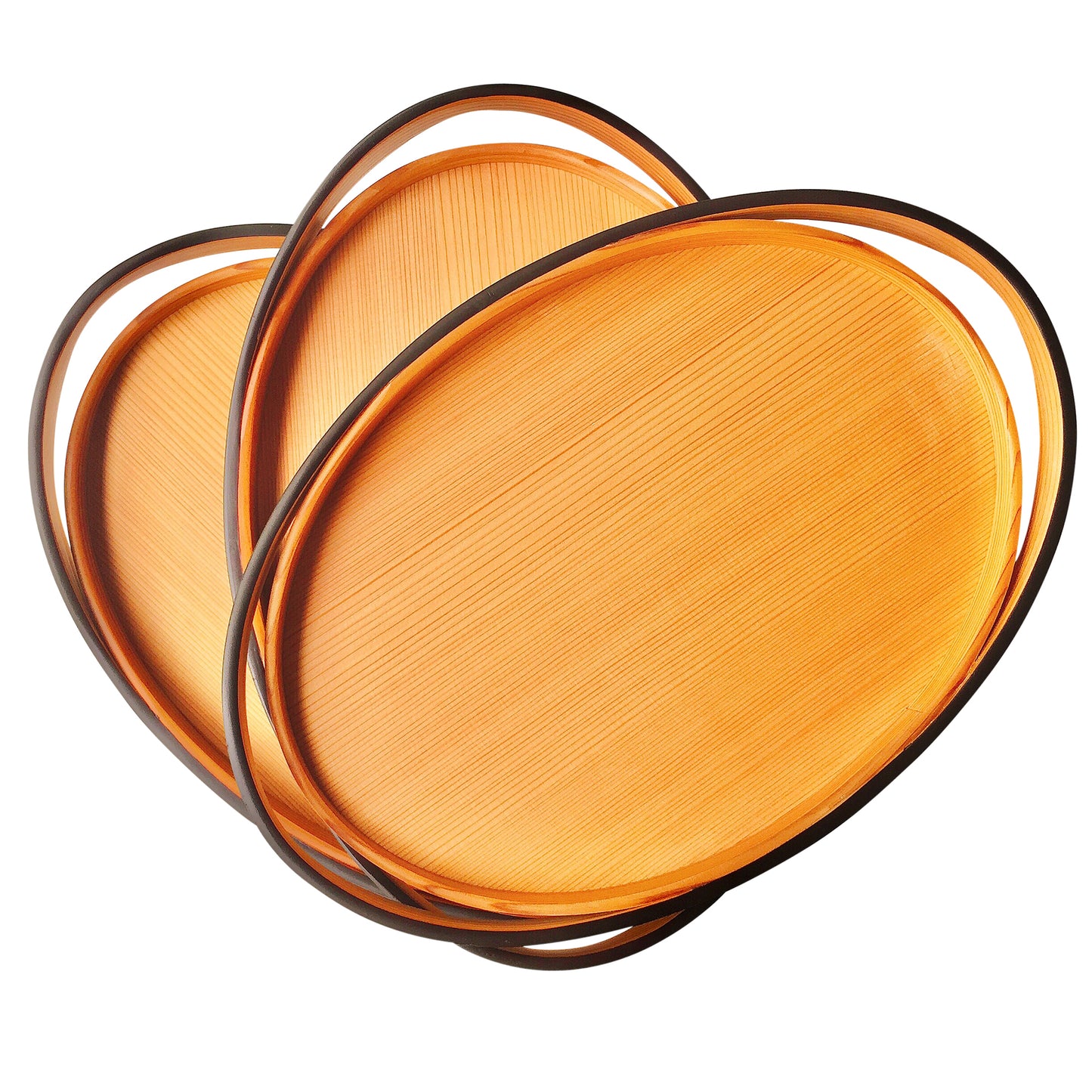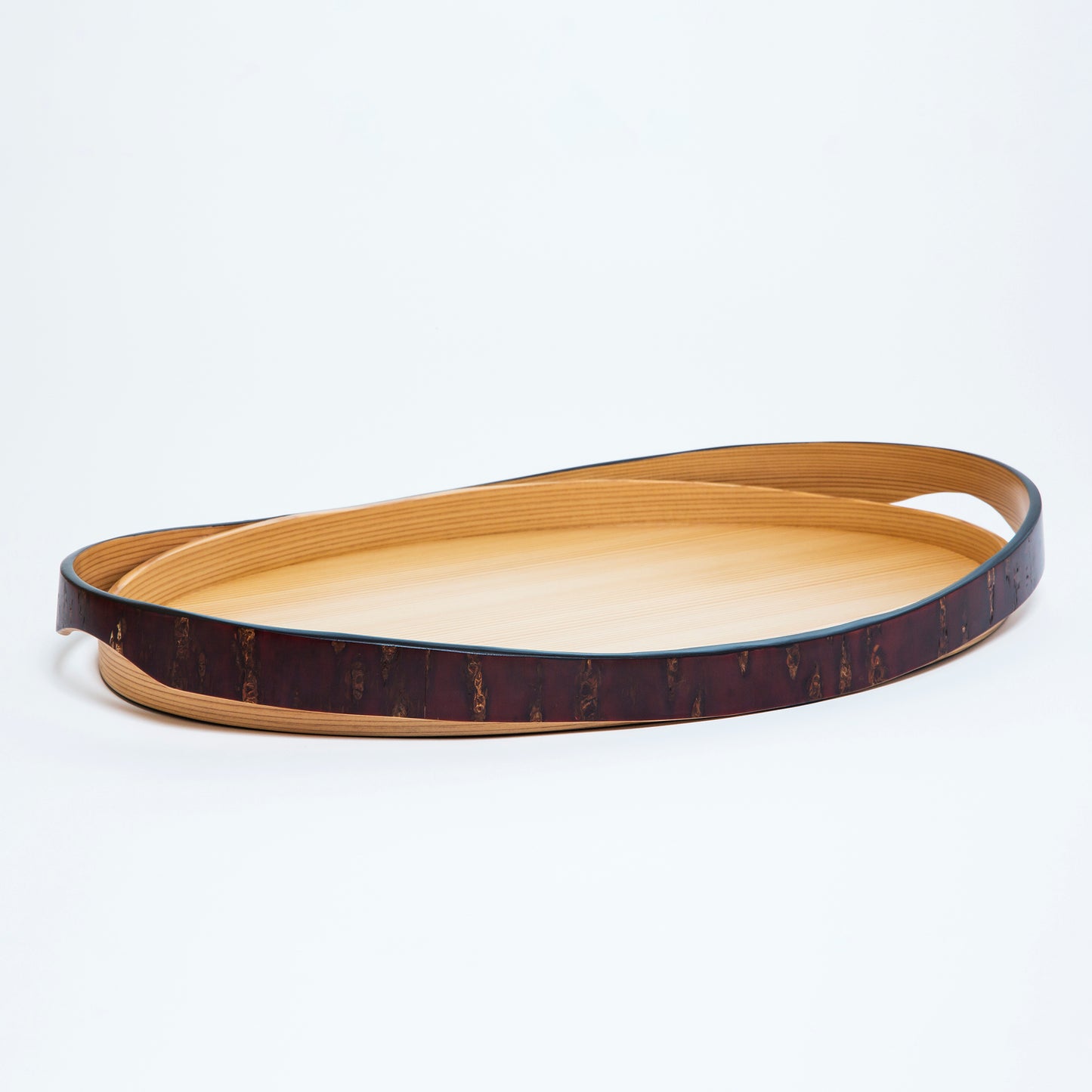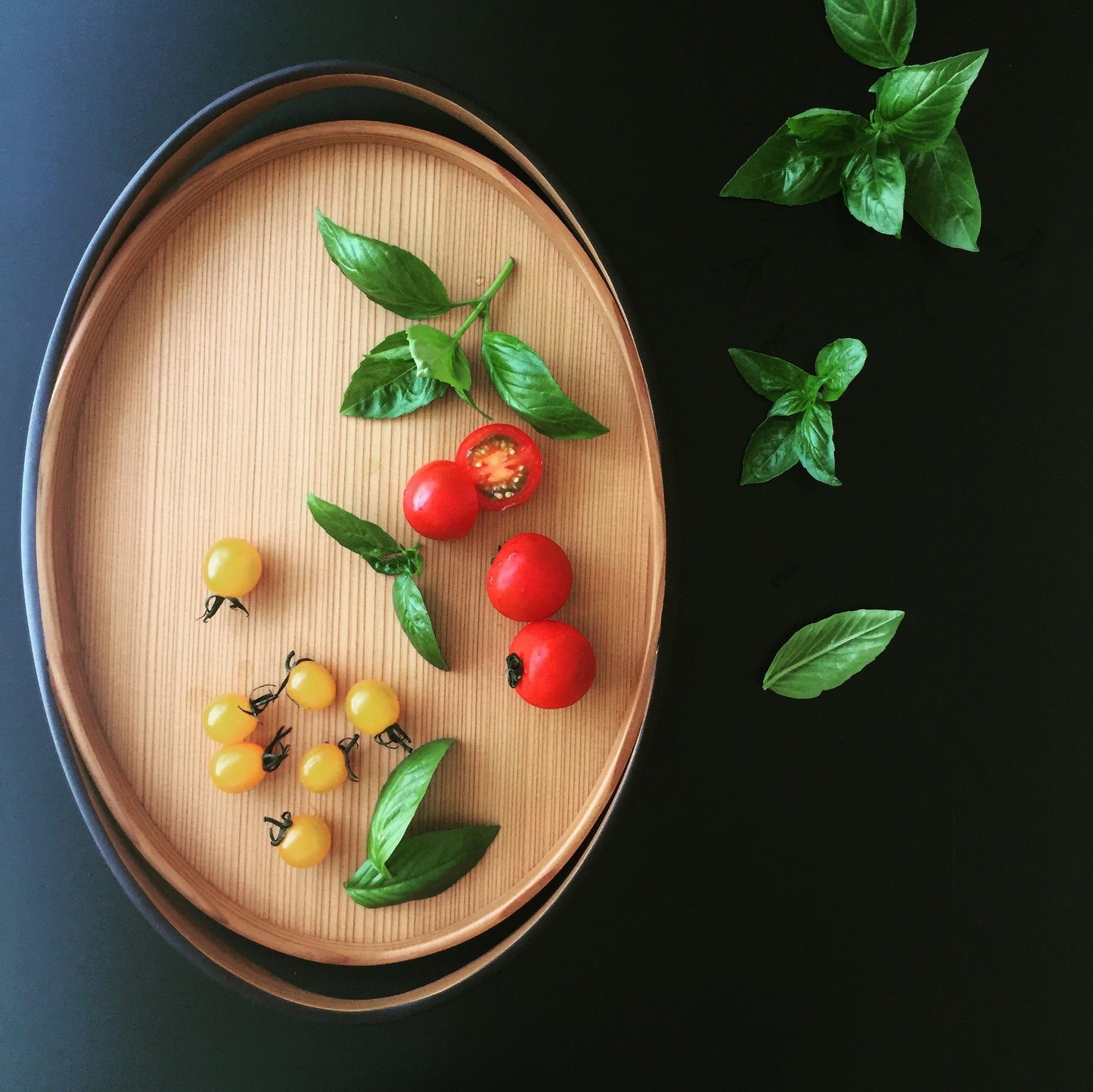Walking Together with the Blessings of Mountain Cherry
The number of kabazaiku craftsmen is decreasing year by year. Most of the remaining artisans are also elderly.
In the past, many people used to take up kabazaiku after retirement,
but lifestyles have changed, and this is no longer the case.
I am always thinking about how we should preserve kabazaiku.
Most of the production process is done by hand, without the use of particularly special tools.
Many craftsmen work from their homes, but are forced to work in isolation.
To carry on the tradition of cherry bark craft into the future,
we believe it is necessary for craftsmen to be able to communicate and connect with each other,
so we have prepared a space where they can gather and work together.
There is a young man who has always wanted to be involved in craftsmanship since childhood,
was captivated by kabazaiku, and became an artisan here.
He learned from bark shaving and is now entrusted with the tea canister production process.
With the hope that the kabazaiku he creates will be used for a long time,
I catch a glimpse of the future of kabazaiku in the silhouette of this young craftsman who continues his meticulous and careful work.
The "kaba" in kabazaiku refers to the bark of the mountain cherry tree.
The outer bark is peeled from living trees to be used as raw material,
but since this is done systematically, the mountain cherry trees do not die.
Moreover, the harvested areas regenerate their bark and can be used again as "nido-kaba" (second bark) after several years.
Drawing courage from the resilience of these mountain cherry trees, we continue our journey with gratitude for their blessings.
Artisan of Kabazaiku Cherry Bark Craft
Hiroki Tomioka
President, Tomioka Shoten Co., Ltd.
有限会社冨岡商店
Tray kasanegasane (L)
Share












